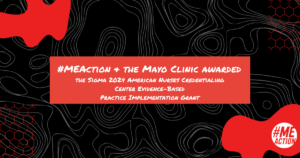Marcie Zinn, Mark Zinn, and Leonard Jason of DePaul University published a case study this week that details how qEEGs can clearly show the dysregulation that occurs in the brains of CFS patients. The case study is of a 43-year old man with CFS (diagnosed by his doctor using the DePaul Symptom Questionnaire and meeting the Canadian Clinical Case definition).
EEG records surface brain electrical activity, and qEEGs/Loreta uses complex math to localize brain activity deeper in the brain down to a millisecond time scale. A qEEG can be thought of as a real-time readout of brain function that lets you see what different areas of the brain are doing. As the researchers explain, “the functional connectivity networks of this patient were sufficiently deregulated to cause” the cognitive symptoms frequently seen in patients which are often referred to as “brain fog”. The Zinns have seen similar qEEG results in other patients, and the qEEGs/Loreta Analyses of patients differs significantly from that of controls.
In the paper’s conclusion, the researchers explain:
These deregulated states represent the brain during nonoptimal functioning, rendering it inefficient for most types of information processing functioning, whether it is executive functioning, memory, perceptual reasoning or information processing speed. When phase lock is significantly less than normal, as in this data set, the ability of the brain to sustain commitment of resources to mediate different functions is severely compromised. Phase shift duration in this data is also hypoactive, meaning that significantly less neurons are being recruited to perform a function than normal. The results here indicate slowed verbal comprehension, executive functions, perceptual reasoning, processing speed and memory, the sum total of which is known as cognitive impairment.
The researchers mention at the end that, “This study involved only one patient, so until it is replicated with larger samples, the results need to be considered preliminary.” Although they did not mention this in the paper, they saw similar results in patients in an unpublished blinded fifty patient/fifty control study at Stanford. You can find more information on their research on the bottom of page 42 of the 2014 IACFS/ME syllabus. The title of the first abstract is “EEG peak alpha frequency is associated with chronic fatigue syndrome: a case control observational study” and the second abstract “Cortical hypoactivation during resting state EEG suggests central nervous system pathology in patients with Chronic Fatigue Syndrome: A source analysis pilot study.”
In the second abstract from the IACFS/ME conference the researchers conclude that “taken together, our findings provide objective quantification of central nervous system dysregulation in CFS sufferers. A model of prolonged subcortical deregulation is hypothesized to explain the results.”
They explain that “qEEG will not provide a stand-alone diagnostic, but would integrate into a clinical diagnostic regimen.” Similar issues with brain function are seen in other serious neurological disorders which is why qEEG/Loreta would need to be used in conjunction with others tests and/or clinical observations to confirm diagnosis.
The Zinns and Leonard Jason are working on more research into this area, including replicating the Stanford research. The researchers told #MEAction that they just had two more articles accepted, which should be coming out very soon. One is a review article discussing the neuroscience of CFS/ME, and the other is a case-control study of 18 people (9 patients with ME/9 controls.)






9 thoughts on “Case Study: "Brain Fog" in CFS can be seen in qEEG/Loreta”
If you need anymore patients for case studies I’d be interested.
Me to.
Before I was sick I was a top graded student. After It was like walking in syrup or heavy sand and mudd to get the answers i now I can.
Not all cognitive symptoms in CFS are actually the experience or consequence of what is a specific phenomenon frequently referred to as brain fog.
One needs to be VERY clear here as to how to define what brain fog is.
It is now becoming increasingly obvious in recent times that the phenomenology within this setting is extremely vague, and as such, results such as this can mean just about anything but brain fog, unless the definition of brain fog is defined with distinct clarity.
Interesting study but I would have thought there would have been a requirement to have a pre illness scan to compare with, how are they sure the patient did not have these “brain changes” before their illness. In my work clinicians “compare” scans to determine disease progression/changes and we have had a number of cases where we have a differential diagnosis of benign lung nodules or metatstatic lung cancer and review of historical scans has shown they have been there for years and are therefore likely benign. Unfortunately I suspect this study will only lead to more questions rather than the definitive answer those with this horrible illness want.
I have significantly recovered from ME however I still have PEM and with it brain fog I recover quite quickly with significant rest. A patient like me who doesn’t exhibit much in the way of symptoms if well rested but does when overstretched would perhaps facilitate such a before and after study.
It would be impossible to have a pre-illnes scan because nobody knows who will develop the illness and it would be ruinously expensive to scan everybody on the off chance they got ill later.
I would be happy to volunteer for such a study.
Samuel,
You are a perfect candidate, in my view.
There are those in a perpetual fog and there are those that are not.
I tried this out before, using SPECT scans as my tool, but alas, by visual analysis, I could see nothing different between the ‘before and after’ images
Sincerely,
John L Whiting
Dear Martin:
We would have to know who will contract me/cfs BEFORE they get it. Duh.
Hi,
May be its too late but do you need more patient for study the EM brain?
Hi Eliza-
Do you live in the Chicago area by any chance? The Zinns work at DePaul now and I can check if they are recruiting for any studies.
Comments are closed.